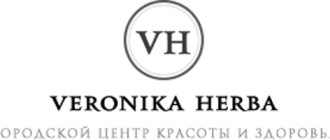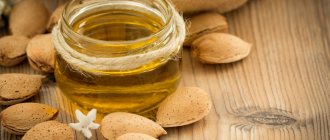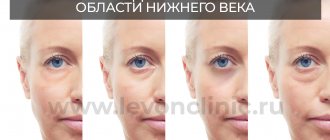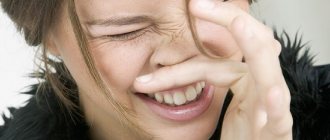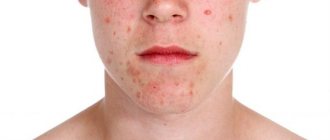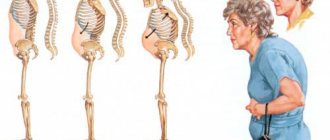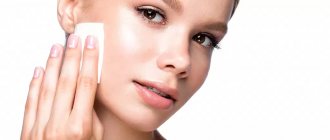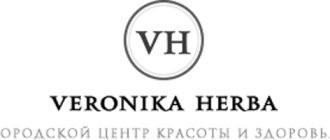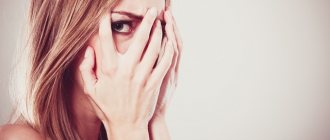Author:
- Shachnev Konstantin Nikolaevich
otorhinolaryngologist
4.00 (Votes: 4)
A furuncle is an acute inflammation of the hair follicle (bulb) together with the sebaceous gland, adjacent areas of the skin and subcutaneous fat. The initial sections of the nose, called the vestibule of the nose, have a large number of hair follicles, and therefore it is there that boils most often develop. They are less common in the area of the tip of the nose, wings and slope of the nose, and nasolabial fold.
Stages of development
The first stage in the development of the disease is a traumatic injury to the skin and nasal mucosa (such as an abrasion, scratch or cut), through which the infection penetrates deep into the tissue. The causative agent of the disease is usually pathogenic staphylococci and streptococci. The infectious agent then spreads along the hair root into the follicle. This process is accompanied by local inflammation and the formation of a painful infiltrate. This stage of the boil is called the infiltration stage. After this, necrosis develops and a necrotic core is formed. The surrounding tissues undergo melting and transform into purulent masses, after which they begin to accumulate under the layer of epidermis surrounding the mouth of the follicle, which is why a subcutaneous abscess develops. This stage of the boil is called the abscess stage.
Skin and hormones
For teenagers and young adults, the main reason for the development of acne is a sharp increase in sebaceous secretion and thickening of the upper layers of the skin from the onset of puberty.
What to do?
In this case, the ideal solution would be a combination of local homeopathic treatment aimed at liquefying thickened sebaceous secretions and the use of peels with salicylic or glycolic acid. In the acute period, when there are bright red swollen nodules on the face, electrocoagulation, local antibiotic or ozone therapy will be effective. In the first stages of treatment, the so-called “cleaning” may be advisable, when the sebaceous glands are mechanically freed from the secretions that clog them. Cleansing is not a truly therapeutic measure, since in the absence of systematic treatment, the sebaceous glands very quickly become clogged again, but in the first stages it can be useful in ensuring access of medications to the walls of the gland.
In some cases, an undeservedly forgotten quartz lamp, which was previously widely used to treat skin diseases, gives a very good effect on inflammatory acne. Currently, such a lamp can be purchased at home. However, only a specialist can give recommendations on purchasing such a lamp and recommend a course, since in some cases its use will be contraindicated, which, however, applies to any method of treatment.
Possible complications of a nasal boil
A nasal boil is not at all as harmless a disease as boils in other locations. The fact is that it is located in the nasolabial triangle (otherwise it is called the “triangle of death”). Its peculiarity and danger as a source of inflammation lies in its extremely developed blood supply: there are many vessels of the venous and arterial network located here. In addition, these veins do not have the valves inherent in the veins of other areas, and therefore formed blood clots, bacteria and their toxins can spread along the venous pathways into the orbit and venous sinuses of the brain. This can cause phlegmon of the nasolabial, buccal area and orbit, thrombophlebitis of the cavernous sinus and other serious complications - meningitis, encephalitis, brain abscess. Less common is the generalization of infection – sepsis. The most common local complications are sinusitis, sinusitis and nasal septum abscesses.
Allergic origin of acne
In some cases, acne on the face is of allergic origin and is associated with intolerance to certain types of food. Then the rash intensifies after various kinds of feasts. Such patients are characterized by a combination of skin rashes with other manifestations: for example, fatigue, headache, digestive disorders, bad breath, general skin sensitivity with a tendency to itching and redness. A surge in requests from patients with this kind of acne to a dermatologist is observed after the New Year celebrations, and in the summer - after returning from a vacation from Turkey and Egypt with their abundant buffet.
What to do?
For rashes associated with food intolerance, the best treatment is to select a diet based on an analysis of the patient's eating habits and the doctor's recommendations for replacing certain types of foods with healthier ones.
Treatment of nasal boil
First of all, it is strictly forbidden to try to treat a nasal boil on your own, much less squeeze it out. Due to the high risk of developing complications with this disease, at the first symptoms you should contact an otolaryngologist.
If the boil is localized small, is in the infiltration stage, and has unexpressed symptoms, outpatient treatment is possible. If the patient applies in a timely manner, the therapeutic program consists of conservative measures: local and general antibacterial therapy, treatment of the boil with antiseptic ointments and solutions, anti-inflammatory and detoxification therapy, etc.
If, at the time of examination, the nasal boil is in an abscessed form, local and general inflammatory signs are pronounced, and there is a risk of complications, then it is necessary to carry out surgical treatment of the nasal boil (opening the boil), and only in a hospital under round-the-clock medical supervision.
How to deal with subcutaneous acne
The simplest mechanical method is not always suitable; subcutaneous pimples sometimes lie quite deep. You should not delay the start of treatment, otherwise the formation will grow and bring a lot of trouble.
How to remove a pimple on your nose:
What does Ichthyol ointment help with and instructions for use
- Apply the pulp of a fresh aloe leaf to the formation and fix it overnight. In the morning the first improvements will be noticeable, after 2-3 nights the pores will be completely cleansed.
- Nettle decoction perfectly removes subcutaneous acne; you just need to drink a glass of decoction a day. It’s easy to prepare: for 1 tbsp. l. dry grass take 1 tbsp. boiling water, the broth is steamed for half an hour, strained and ready to drink. Thanks to the restoration of metabolic processes, blood flow improves and skin tissue regeneration starts.
- A tonic is prepared from lemon juice and water in equal proportions; wipe your face every time after washing. The product quickly removes mature acne on the nose, face and body. However, lemon tonic may not cope with a profuse rash.
- Tea tree oil helps you forget about subcutaneous acne forever. Apply the composition to the points of inflammation and leave for 2-3 hours. The oil dries out acne, soothes the pain and after 3-5 procedures brings the tumor to maturity, then the formation bursts and is removed with cotton wool and oil.
- Baking soda with camphor alcohol is an ideal way to quickly remove pimples from the nose. Helps with blackheads, mature whiteheads. Dip a cotton swab in alcohol, then in soda and spread the mixture on the nose in a circular motion. After 2-3 minutes, rinse off and apply a moisturizing mask. If the formations are mature, they will disappear, immature ones will turn very pale, and the pain will decrease.
Medications
If subcutaneous pimples have already grown to a significant size, you should turn to pharmaceutical preparations. It is better to first visit a dermatologist who will tell you how to get rid of the formations, but you can also try the following remedies:
- Levomekol. Cream or gel is applied to the formation, preferably at night; in the morning the rash will become noticeably paler and after a few procedures will disappear completely.
- Levomycetin tablets, crushed into powder and mixed with calendula tincture (2 tablets per 1 tablespoon of tincture) help remove a subcutaneous pimple that does not want to ripen. The composition also gets rid of blackheads and wen.
- Zinc ointment is an ideal remedy for removing the most difficult acne. By drying, the ointment anesthetizes the local formation and accelerates the process of skin regeneration.
- Zenerite. Despite the fact that the drug is not very cheap, its treatment is most effective. Zinerit has practically no contraindications; the ointment is used for all types of rashes on the nose. Even after the first use, a positive result will be noticeable - the number of rashes will decrease significantly.
Ichthyol ointment will help remove long-term subcutaneous acne. It should be applied locally, fixed with a bandage, and left overnight. In 4-5 procedures, the skin on the formation will soften, and the fat will stretch out on its own. This cannot be called a quick treatment, but the effect of the ointment is guaranteed.
Nasal cleansing strips
Such stickers are sold in pharmacies and quickly and permanently eliminate blackheads on the nose. The cleaning strips have a fabric structure and are adhesive on one side. The sequence of actions is as follows:
- First, steam your face to open up your pores.
- Additionally, cleanse your skin with a scrub.
- Remove the protective film and apply the strip to the wet skin of your nose.
- Leave for 5-15 minutes.
- Remove the cleansing strip from your nose.
- Use micellar water or cleansing toner.
Salicylic acid for acne
This budget product can be bought at every pharmacy. Salicylic acid 1 or 2% is sold without a prescription and shows almost instant results. Apply the alcohol solution directly to acne, do not wash off for 10-15 minutes. Carry out the procedure up to 3-4 times a day until the pimples completely disappear.
More frequent use of salicylic acid is contraindicated. It is important not to overdo it with this product, otherwise a visible burn will appear at the point of contact of the aggressive substance with the skin.
For hydration and additional nutrition after the procedure, rinse your face with chamomile decoction.
Causes of acne on the nose
Inflammation can be caused by:
- violation of personal hygiene rules;
- low quality cosmetics;
- excess sebum;
- poor nutrition;
- lack of vitamins;
- stress;
- hormonal imbalance;
- taking antibiotics;
- diseases of the digestive system.
"Map of acne" and diseases
Very often, pimples accumulate in a certain part of the face, for example, on the forehead, cheeks, temples or chin. Other parts of the face always remain clean. In Eastern medicine, it is believed that any pimples on the skin are a consequence of problems with internal organs and various diseases. Many cosmetologists also agree with Eastern medicine on this. So, which organ is unhealthy can be determined by which part of the face your acne appears most often. Now you will find out what pimples on the face mean and what diseases pimples tell us about.
Table. The relationship between the nose and internal organs
| Part of the nose | Associated organs and systems |
| Top part | There is a high probability of problems with the stomach and pancreas. |
| Tip | Get a heart test. With poor blood circulation, the condition of all organs and systems worsens, and the skin is no exception. If acne is localized on the tip of the nose, this may indicate the presence of arrhythmia. Redness of the nose in general most likely indicates high blood pressure. |
| Nostrils and wings | The possibility of bronchial diseases cannot be excluded. |
So which method is most effective?
Is it difficult to understand the many methods? Not at all. An experienced doctor will quickly select the correct treatment regimen on an individual basis. All these procedures are carried out quickly and painlessly. They may be preceded by a soothing and relaxing massage procedure, which is also effective for problem skin. For example, a deep lift-massage performed on a device that imitates a Jacquet pinch massage, aimed at kneading deep stagnant elements and draining the sebaceous glands. This is a cozy and pleasant procedure, during which people fall asleep, especially after a working day. It can be combined with other types of treatment (as a preparatory stage for peeling, mesotherapy treatment) to combine relaxing care and treatment of problem skin.
The editors thank the specialists of the BioMi Vita clinic for their assistance in preparing the material.
Uses of lemon juice
Use lemon juice as a local antiseptic. Moisten a cotton pad, apply it to your nose, and do not remove the compress for 10-15 minutes. Lemon cleanses pores, dries out pimples, and makes them less noticeable. If you repeat the procedure in the morning and evening, the inflammation disappears within 2-3 days (depending on the size of the pimple).
While you are using lemon juice, you should not go out in the sun, otherwise you will get dryness, irritation, and burns.
- How to treat pancreatitis of the pancreas at home
- Hijama - what is this procedure? How to do hijama with bloodletting or cupping and contraindications
- How to detect stomach cancer at an early stage
